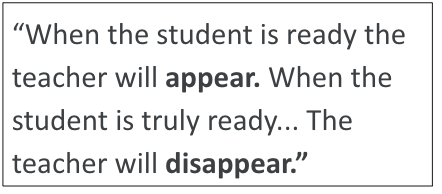
Mentoring is like an infinity loop in which both parties benefit and have the opportunity to experience each side of the relationship throughout their career — and perhaps simultaneously. Meaning, you can mentor someone at the same time you are being mentored by someone else.
Either way, a typical mentoring relationship occurs over four stages:
- Qualification of fit – Style match, desired characteristics (detailed below) and leadership development goals are determined here.
- Defining your relationship framework & norms – These include confidentiality, meeting logistics, success measures and when to course correct.
- Reflection and growth – Stepping back to assess opportunities and tricky situations, and to identify steps to address them, along with capturing lessons learned and celebrating the wins.
- Close-out – Eventually, it’s time to move on … perhaps, even to another mentoring relationship. In the final session, it’s helpful to reflect on the mentoring journey, identify takeaways and next steps, and express gratitude.

As for finding that “perfect fit” mentor, it’s helpful to qualify some key characteristics to ensure a productive, fulfilling relationship:
- Supportive – Is this person someone who will support you in a non-judgmental way when you make mistakes or hit a wall, and keep you off the ledge when you need it most? Yes, sometimes we need a solid kick in the pants, but mostly when it comes to a mentor, we want someone who actively listens, is empathic, encouraging and brings a sense of optimism to the table.
- Trusted Adviser – Do you feel safe with this person, free to share your leadership vulnerabilities? Will she be able to provide guidance and ideas to help you address tenuous situations and grow as a leader?
- Role modeling – Does this potential mentor exhibit traits you would ultimately like to develop as a leader? Do you have an opportunity to see this person in action (even if only on occasion)?
- Political savvy – Let’s face it, a huge part of leadership is understanding organizational dynamics and being able to maneuver within those complexities. Has this person successfully navigated through the political intricacies with grace and do they demonstrate the skills you’d like to acquire or emulate?
- Time – Mentoring does not take up a ton of time (usually an hour or two a month suffices). It’s wise to clarify upfront, though, what amount of time this person can commit to the relationship, and whether he is open to a periodic “Mayday” phone call or text.
Of course, ensuring a successful mentoring relationship also requires key characteristics from the mentee … and a perfect topic for another blog post!
Mentoring is a powerful leadership development tool no matter which role you’re playing throughout your career. As a mentor, it’s a refreshing way to give back and deepen relationships across your network. As a mentee, you get a sounding board and a safe place to get out of your own head.
Is it time to hop aboard the Infinity Loop?
Such an insightful post! I love the concept of the infinity loop.